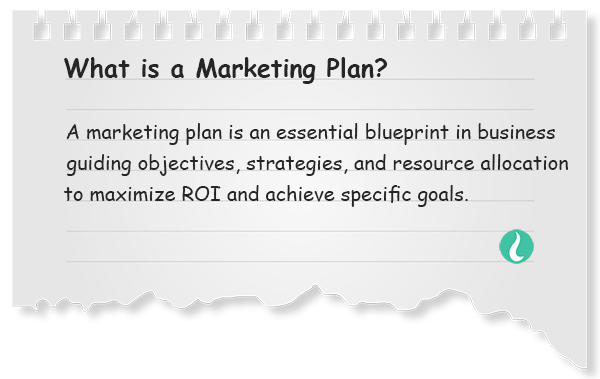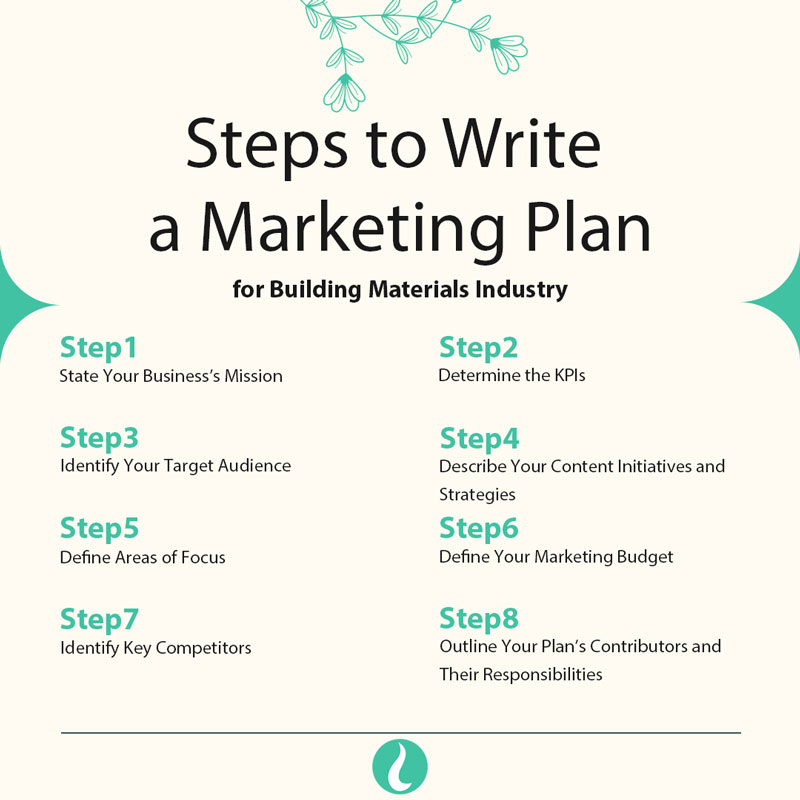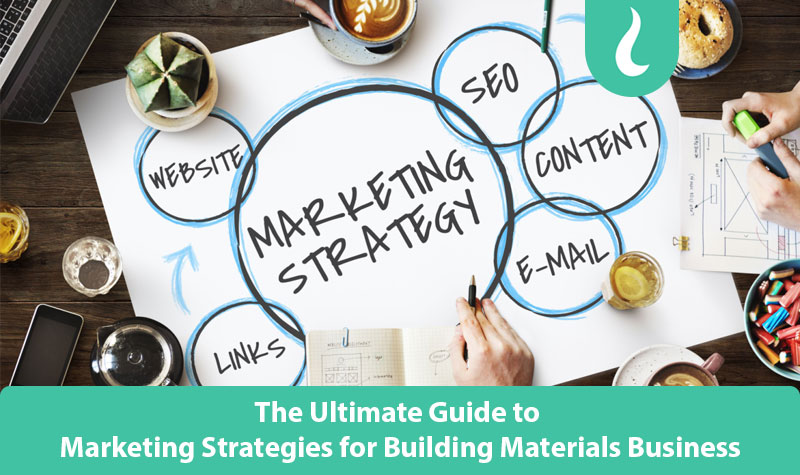Welcome to our comprehensive guide on crafting effective marketing plans tailored specifically for the building materials industry. In today’s competitive market landscape, strategic marketing planning is essential for companies operating in the building materials sector to thrive and stay ahead of the curve.
The building materials industry plays a crucial role in various sectors, including construction, infrastructure development, and home improvement. From manufacturers to distributors and retailers, businesses within this industry face unique challenges and opportunities that require a targeted approach to marketing.
In this guide, we will delve into the intricacies of marketing planning within the building materials sector, offering valuable insights, practical strategies, and actionable steps to help you develop a robust and tailored marketing plan for your business.
Throughout this journey, we will explore the fundamental principles of marketing planning, the importance of aligning marketing strategies with business objectives, and the key elements that constitute a successful marketing plan in the context of building materials.
Whether you are a seasoned marketing professional looking to refine your strategies or a newcomer seeking guidance on navigating the complexities of the building materials market, this guide is designed to equip you with the knowledge and tools necessary to drive growth, foster brand awareness, and achieve sustainable success in the dynamic world of building materials.
Join us as we embark on this journey to unlock the power of strategic marketing planning and unleash the full potential of your building materials business. Let’s dive in!
What is a Marketing Plan?

In the fast-paced and ever-evolving landscape of business, having a clear roadmap for your marketing efforts is essential. A marketing plan serves as a detailed blueprint that outlines your marketing objectives, strategies, tactics, and initiatives aimed at achieving specific business goals. It is a comprehensive document that guides your marketing activities and helps you allocate resources effectively to maximize your return on investment (ROI).
Marketing Plan vs. Business Plan
While a marketing plan and a business plan are both crucial components of any successful venture, they serve distinct purposes and focus on different aspects of the business.
A business plan provides a comprehensive overview of your entire business, encompassing aspects such as your company’s mission and vision, target market analysis, competitive landscape, financial projections, and operational strategies. It serves as a roadmap for your business as a whole, guiding decision-making and providing a framework for long-term success.
On the other hand, a marketing plan is a subset of the business plan that specifically addresses your marketing goals, strategies, and tactics. While the business plan outlines the overall direction and objectives of the company, the marketing plan zooms in on how you will attract, engage, and retain customers to achieve those objectives.
In essence, the business plan sets the stage for your entire business, while the marketing plan focuses on the strategies and tactics necessary to promote your products or services and drive sales.
Marketing Strategy vs. Marketing Plan
The terms “marketing strategy” and “marketing plan” are often used interchangeably, but they refer to distinct concepts within the realm of marketing.
A marketing strategy is a high-level approach or overarching framework that guides your marketing efforts to achieve specific business objectives. It involves understanding your target audience, positioning your brand effectively in the market, and determining the overall direction of your marketing activities. Your marketing strategy lays the foundation for your marketing plan by defining the key principles and tactics that will drive your marketing initiatives.
On the other hand, a marketing plan is a detailed document that operationalizes your marketing strategy. It outlines the specific actions, tactics, and timelines for implementing your marketing strategy effectively. A marketing plan typically includes elements such as market research, target audience analysis, marketing channels, promotional activities, budget allocation, and metrics for measuring success.
In summary, while your marketing strategy provides the overarching framework for your marketing efforts, your marketing plan serves as the tactical roadmap for executing that strategy and achieving your business goals. Together, they form a cohesive framework that guides your marketing activities and drives success in today’s competitive marketplace.
How to Write a Marketing Plan for Building Materials
Crafting a comprehensive marketing plan for your building materials business requires careful consideration of industry-specific factors, market dynamics, and strategic objectives. Here’s a step-by-step guide to help you navigate the process effectively:
State Your Business’s Mission
Begin by clearly articulating your building materials business’s mission statement. Your mission statement should succinctly define the purpose and values of your company, outlining what sets you apart in the market and how you aim to serve your customers. It should capture the essence of your brand and provide a guiding principle for all your marketing efforts.
Example:
“Our mission is to provide high-quality, sustainable building materials that exceed customer expectations, contribute to environmentally responsible construction practices, and empower communities to build better futures.”
Determine the KPIs for This Mission
Identify key performance indicators (KPIs) that align with your business’s mission and objectives. These KPIs will serve as measurable targets to track the success of your marketing initiatives and ensure alignment with your broader business goals. KPIs may include metrics such as sales revenue, market share, customer satisfaction, brand awareness, and lead generation.
Example:
Increase sales revenue by 20% within the next fiscal year.
Achieve a 15% market share in the commercial construction segment.
Improve customer satisfaction ratings to 90% or above.
Identify Your Target Audience within the Building Materials Industry
Conduct market research to identify and understand your target audience within the building materials industry. Determine the demographics, psychographics, and behaviors of your ideal customers, as well as their specific needs, pain points, and preferences. Tailor your marketing strategies to resonate with your target audience and address their unique challenges and motivations.
Example:
Architects and designers seeking innovative and sustainable building solutions.
Contractors and builders looking for cost-effective and durable materials for construction projects.
Homeowners interested in energy-efficient and aesthetically pleasing building materials for residential renovations.
Describe Your Content Initiatives and Strategies Specific to the Industry
Develop content initiatives and strategies tailored to the building materials industry to engage your target audience and showcase your expertise. Create informative and visually appealing content that educates, inspires, and informs your audience about your products, solutions, and industry trends. Utilize a mix of content formats, such as blog posts, case studies, videos, and infographics, to appeal to different preferences and channels.
Example:
Publish blog articles highlighting sustainable building practices and eco-friendly materials.
Create video tutorials demonstrating the installation and benefits of your products.
Share customer success stories and testimonials showcasing real-world applications of your building materials.
Clearly Define Areas of Focus and What Your Plan Will Not Cover
Outline the specific areas of focus within your marketing plan, as well as any aspects that are outside the scope of your plan. Clarify your priorities, objectives, and limitations to ensure alignment and clarity among your team members and stakeholders. By clearly defining what your plan will and will not cover, you can effectively allocate resources and manage expectations.
Example:
- Focus areas:
Digital marketing strategies to increase online visibility and lead generation.
Trade show participation and industry events to network with potential customers and partners. - Exclusions:
Traditional print advertising campaigns due to budget constraints.
International expansion efforts beyond the scope of this marketing plan.
Define Your Marketing Budget Considering the Unique Challenges and Opportunities in the Building Materials Sector
Allocate your marketing budget strategically to maximize your ROI and achieve your business objectives. Consider the unique challenges and opportunities within the building materials sector, such as seasonality, competitive landscape, and regulatory considerations, when determining your budgetary allocations. Prioritize investments in areas that are most likely to drive results and align with your strategic priorities.
Example:
- Allocate 30% of the marketing budget to digital advertising campaigns targeting architects and contractors on industry-specific platforms like ArchDaily and Construction World.
- Invest 20% of the budget in content marketing initiatives, including website development, blog content creation, and social media engagement.
- Reserve 10% of the budget for trade show participation and sponsorship opportunities to showcase products and connect with industry professionals.
Identify Key Competitors in the Building Materials Market
Conduct a competitive analysis to identify and assess key competitors within the building materials market. Evaluate their products, pricing strategies, distribution channels, marketing tactics, and brand positioning to identify areas of differentiation and opportunities for improvement. Understanding your competitors’ strengths and weaknesses will enable you to refine your own marketing strategies and gain a competitive advantage in the marketplace.
Example:
- Competitor A: Offers a wide range of environmentally friendly building materials and has a strong presence in sustainable construction projects.
- Competitor B: Specializes in premium luxury building materials targeted at high-end residential and commercial projects.
- Competitor C: Emphasizes cost-effective solutions and efficient supply chain management to appeal to budget-conscious builders and contractors.
Outline Your Plan’s Contributors and Their Responsibilities, Taking into Account Industry-Specific Roles and Expertise
Identify key stakeholders and contributors to your marketing plan, including internal team members, external agencies, and industry partners. Clearly define their roles, responsibilities, and expectations to ensure accountability and alignment with your marketing objectives. Leverage industry-specific expertise and insights from professionals within the building materials sector to inform and optimize your marketing strategies.
Example:
- Marketing Manager: Oversees the development and execution of the marketing plan, including strategy formulation, budget management, and performance tracking.
- Content Specialist: Creates engaging and informative content tailored to the building materials industry, such as blog posts, whitepapers, and case studies.
- Sales Team: Provides feedback and insights from customer interactions to inform marketing initiatives and identify opportunities for product development or improvement.
By following these steps and incorporating industry-specific considerations into your marketing plan, you can effectively position your building materials business for success, drive growth, and achieve your business objectives in today’s competitive marketplace.
Types of Marketing Plans for Building Materials
In the dynamic and competitive landscape of the building materials industry, having a well-defined marketing plan is essential for driving growth, reaching target audiences, and achieving business objectives. Here are several types of marketing plans tailored specifically for the building materials sector:
Quarterly or Annual Marketing Plans for the Building Materials Industry
Quarterly or annual marketing plans provide a structured framework for outlining marketing objectives, strategies, and tactics over a specified period. These plans allow building materials companies to align their marketing efforts with broader business goals and adapt to changing market dynamics throughout the year.
Best Practices for Implementing Quarterly or Annual Plans
Conduct a comprehensive market analysis to identify trends, opportunities, and challenges within the building materials industry.
Set SMART (Specific, Measurable, Achievable, Relevant, Time-bound) marketing objectives aligned with business goals and market conditions.
Develop a strategic marketing mix that leverages a combination of online and offline channels to reach target audiences effectively.
Allocate resources and budgetary allocations based on projected ROI and anticipated market demand.
Monitor key performance indicators (KPIs) regularly to track progress, identify areas for improvement, and make data-driven adjustments as needed.
Social Media Marketing Plan for Building Materials
Social media has become an integral part of marketing strategies for building materials companies, offering opportunities to engage with target audiences, showcase products, and build brand awareness. A social media marketing plan outlines how building materials businesses can leverage social platforms to connect with customers, drive website traffic, and generate leads.
Tailored Strategies for Social Media Engagement in the Building Materials Sector
Identify the most relevant social media platforms for reaching your target audience, such as LinkedIn, Instagram, and Houzz.
Develop a content calendar with a mix of product highlights, project showcases, industry news, and educational content.
Utilize visual content, such as photos and videos, to showcase the quality, durability, and aesthetics of your building materials.
Engage with industry influencers, architects, designers, and contractors to expand your reach and credibility within the building materials community.
Monitor social media analytics to track engagement metrics, audience demographics, and content performance, and adjust your strategy accordingly.
Content Marketing Plan for Building Materials
Content marketing is a powerful strategy for building materials companies to establish thought leadership, educate customers, and drive inbound leads. A content marketing plan outlines how to create and distribute valuable, relevant, and consistent content to attract and retain target audiences.
Leveraging Content Marketing for Building Materials: Strategies and Tips
Identify key topics and themes relevant to the building materials industry, such as sustainable construction practices, design trends, and installation guides.
Develop a content strategy that incorporates a mix of blog posts, case studies, whitepapers, videos, and infographics to appeal to different audience preferences.
Optimize content for search engines (SEO) to improve visibility and organic traffic to your website.
Promote content through various channels, including social media, email newsletters, industry publications, and partnerships with influencers and industry associations.
Measure the effectiveness of your content marketing efforts through metrics such as website traffic, engagement rates, lead generation, and conversion rates.
New Product Launch Marketing Plan for Building Materials
Launching a new product in the building materials industry requires careful planning, promotion, and execution to generate excitement, drive demand, and achieve sales targets. A new product launch marketing plan outlines the strategies and tactics for introducing innovative building materials to the market successfully.
Key Steps to Successfully Launching Building Materials Products
Conduct market research to identify customer needs, preferences, and competitive offerings.
Develop a compelling value proposition highlighting the unique features, benefits, and applications of the new product.
Create a multi-channel marketing campaign that includes teaser campaigns, product demonstrations, press releases, and promotional offers.
Leverage industry events, trade shows, and exhibitions to showcase the new product and engage with potential customers, partners, and influencers.
Monitor customer feedback, sales performance, and market trends post-launch to iterate and refine marketing strategies for ongoing success.
Growth Marketing Plan for Building Materials
A growth marketing plan focuses on scaling business operations, expanding market reach, and increasing revenue streams within the building materials industry. It involves identifying growth opportunities, implementing targeted marketing initiatives, and optimizing processes to drive sustainable business growth.
Strategies to Drive Growth in the Building Materials Industry
Identify untapped market segments, geographical regions, or customer demographics with growth potential.
Develop personalized marketing campaigns tailored to the needs and preferences of target audiences.
Invest in digital marketing channels such as search engine optimization (SEO), pay-per-click (PPC) advertising, and email marketing to expand reach and generate leads.
Explore strategic partnerships, distributor relationships, and collaborations with industry stakeholders to extend market reach and access new customers.
Continuously analyze and optimize marketing performance metrics, sales pipelines, and customer feedback to identify areas for improvement and drive continuous growth.
By implementing these tailored marketing plans, building materials companies can enhance their visibility, connect with target audiences, and drive sustainable growth in the competitive marketplace. Each plan offers unique strategies and tactics to address specific challenges and capitalize on opportunities within the building materials industry.
Marketing Plan Examples in the Building Materials Industry
Up to this point, all the essential components for crafting a comprehensive marketing plan have been presented. If it’s your first attempt at creating a marketing plan for your building materials company, you might still feel a bit uncertain. To provide clarity and inspiration, here are some brief and straightforward examples. By using these examples as a reference, you can tailor them to suit your unique circumstances, ultimately creating a well-rounded and comprehensive marketing plan for your company based on the insights shared in this article
Marketing Plan for a Roofing Contractor
- Goal: Increase brand awareness and generate leads
- Target Market: Residential and commercial roofing contractors
- Marketing Strategies:
1- Develop a strong online presence: Create a user-friendly website with high-quality photos and videos of completed roofing projects. Utilize social media platforms to engage with potential customers and share industry insights.
2- Run targeted online advertising campaigns: Utilize Google Ads’ location targeting feature to reach potential customers in specific geographical areas. Employ keyword-rich ad copy that accurately reflects the services offered.
3- Attend industry events and conferences: Participate in roofing conventions and industry meetings to network with potential clients and expand brand visibility.
4- Partner with local businesses: Collaborate with home improvement retailers, hardware stores, and other relevant businesses to cross-promote services. Offer joint promotions or discounts to customers.
5- Offer free consultations and estimates: Provide potential customers with free consultations and estimates to demonstrate expertise and build trust.
Marketing Plan for a Lumber Yard
- Goal: Drive foot traffic to the lumber yard, increase sales of lumber and building materials, and generate leads for custom woodworking services.
- Target Market: Homeowners, DIY enthusiasts, contractors, and construction businesses
- Marketing Strategies:
1- Offer competitive prices and promotions: Regularly advertise special deals and discounts on lumber, building materials, and custom woodworking services.
2- Provide knowledgeable and helpful customer service: Train staff to provide expert advice on selecting and using building materials. Address customer inquiries promptly and professionally.
3- Host workshops and demonstrations: Organize workshops and demonstrations on topics related to lumber selection, woodworking techniques, and DIY home projects.
4- Partner with local home improvement retailers: Cross-promote products and services with local home improvement stores to reach a wider customer base.
5- Create a loyalty program: Reward repeat customers with discounts, exclusive offers, and personalized shopping experiences.
Marketing Plan for a Brick and Tile Manufacturer
- Goal: Increase brand awareness, drive sales of bricks and tiles, and position the company as a leader in the industry.
- Target Market: Homeowners, architects, interior designers, and builders
- Marketing Strategies:
1- Develop a strong brand identity: Create a consistent brand voice and visual style across all marketing materials.
2- Create high-quality product photography and videos: Showcase the beauty and durability of bricks and tiles through stunning visual content.
3- Utilize social media marketing: Target specific demographics and geographic areas with social media campaigns. Share informative and engaging content related to brick and tile applications.
4- Participate in trade shows and industry events: Showcase products and network with potential customers at relevant trade shows and industry conferences.
5- Develop relationships with architects and designers: Attend industry events, provide free samples, and offer educational workshops to architects and interior designers.
Marketing Plan for a Window and Door Manufacturer
- Goal: Increase brand awareness, drive sales of windows and doors, and position the company as a provider of high-quality, energy-efficient products.
- Target Market: Homeowners, remodelers, builders, and architects
- Marketing Strategies:
1- Develop case studies and testimonials from satisfied customers: Highlight positive feedback from customers to build trust and credibility.
2- Offer financing options and rebates: Make purchasing windows and doors more affordable by offering flexible financing plans and attractive rebates.
3- Partner with energy-efficiency programs: Partner with local and national energy-efficiency programs to promote the energy-saving benefits of windows and doors.
4- Participate in community events and charity fundraisers: Sponsor local sports teams, organizations, and community events to increase brand visibility and social responsibility.
5- Create marketing materials that emphasize energy efficiency: Showcase the energy-saving features of windows and doors through informative brochures, website content, and social media campaigns.
Marketing Plan for a Building Materials Distributor
- Goal: Increase brand awareness, drive sales of building materials, and build relationships with key accounts.
- Target Market: Contractors, builders, and retail lumber yards
- Marketing Strategies:
1- Develop a comprehensive product catalog and online ordering system: Provide customers with an easily accessible platform to view and order products.
2- Offer competitive pricing and volume discounts: Attract and retain customers by providing competitive pricing and volume discounts.
3- Provide exceptional customer service and technical support: Respond promptly to customer inquiries and provide expert advice on product selection.
4- Host educational workshops and seminars: Organize workshops and seminars on topics related to building materials, construction.
Marketing Plan FAQs for Building Materials Companies
As building materials companies navigate the complexities of marketing in the industry, it’s common to have questions about developing and implementing effective marketing plans. Here are some frequently asked questions (FAQs) along with comprehensive answers tailored specifically for building materials companies:
Why is a marketing plan important for building materials companies?
A marketing plan serves as a roadmap for building materials companies, guiding their efforts to reach and engage target audiences, differentiate their products, and drive sales. It helps align marketing activities with business objectives, maximize ROI, and adapt to changing market conditions.
How do I identify my target audience in the building materials industry?
Start by conducting market research to understand the demographics, preferences, and pain points of your target audience, including architects, contractors, builders, and homeowners. Analyze industry trends, customer feedback, and competitor strategies to identify opportunities for segmentation and targeting.
What are the key components of a marketing plan for building materials?
A marketing plan for building materials typically includes sections on market analysis, target audience identification, competitive analysis, positioning strategy, marketing tactics, budget allocation, and measurement metrics. It should be comprehensive, actionable, and aligned with the company’s overall business goals.
How can I effectively allocate my marketing budget in the building materials industry?
Allocate your marketing budget based on the objectives of your marketing plan, the needs of your target audience, and the effectiveness of different marketing channels. Consider investing in a mix of online and offline tactics, such as digital advertising, content marketing, trade shows, and industry partnerships, to maximize reach and impact.
How do I measure the success of my marketing efforts in the building materials industry?
Define key performance indicators (KPIs) aligned with your marketing objectives, such as website traffic, lead generation, sales conversions, and customer satisfaction. Use analytics tools to track and analyze these metrics regularly, identify trends and opportunities, and make data-driven decisions to optimize your marketing strategies.
What are some best practices for marketing building materials sustainably?
Focus on highlighting the environmental benefits, sustainability certifications, and eco-friendly features of your building materials in your marketing messaging. Showcase real-life examples of sustainable construction projects using your products, engage with green building organizations, and incorporate green marketing principles into your overall brand strategy.
How can I leverage digital marketing effectively for my building materials company?
Utilize digital marketing channels such as search engine optimization (SEO), pay-per-click (PPC) advertising, social media marketing, email marketing, and content marketing to reach and engage target audiences online. Optimize your website for search engines, create compelling content, and leverage social media platforms to showcase your products and connect with customers.
What role does brand positioning play in marketing building materials?
Brand positioning is critical for building materials companies to differentiate themselves from competitors, establish credibility, and resonate with target audiences. Define your unique value proposition, communicate your brand story effectively, and consistently reinforce your brand message across all marketing channels to strengthen your brand presence and influence in the market.
By addressing these frequently asked questions and implementing strategic marketing initiatives tailored to the building materials industry, companies can enhance their visibility, attract customers, and drive growth in a competitive marketplace.
Sample Marketing Plan Template for Building Materials Businesses
Creating a marketing plan tailored to the unique needs and objectives of your building materials business is essential for driving growth and achieving success in the industry. Use the following template as a guide to develop your comprehensive marketing plan:
Create an Overview or Primary Objective Tailored to the Building Materials Industry
Overview:
ABC Building Materials aims to establish itself as a leading provider of sustainable and innovative construction solutions in the competitive building materials market. Our primary objective is to increase brand awareness, drive customer engagement, and generate qualified leads to support business growth and expansion.
Determine the KPIs Specific to Building Materials Marketing Objectives
Key Performance Indicators (KPIs):
Increase website traffic by 20% within the next six months.
Generate 100 qualified leads from target industries, such as commercial construction and residential remodeling, per quarter.
Achieve a 15% conversion rate from leads to sales for our flagship products.
Increase brand recognition and sentiment scores by 25% through customer surveys and social media monitoring.
Identify Your Buyer Personas within the Building Materials Market
Buyer Personas:
- Architectural Innovator: Professionals seeking cutting-edge materials for sustainable and aesthetically pleasing designs.
- Contractor Pro: Builders and contractors looking for durable, cost-effective solutions for construction projects.
- Homeowner DIYer: DIY enthusiasts and homeowners interested in eco-friendly and easy-to-install building materials for home improvement projects.
Describe Content Initiatives and Strategies Optimized for the Building Materials Industry
Content Initiatives:
- Blog: Publish informative articles, case studies, and project spotlights showcasing the benefits and applications of our building materials.
- Video Tutorials: Create engaging video content demonstrating product installation techniques and project inspiration for customers.
- Social Media Campaigns: Develop visually appealing content for platforms like Instagram and Pinterest to showcase our products and engage with target audiences.
- Sustainability Reports: Produce annual sustainability reports highlighting our commitment to environmental responsibility and corporate social responsibility initiatives.
Define Your Marketing Budget Considering the Unique Aspects of the Building Materials Sector
Marketing Budget Allocation:
- Digital Advertising: 30% of the budget for targeted PPC campaigns, social media ads, and display advertising to increase online visibility and lead generation.
- Content Marketing: 20% of the budget for website development, blog content creation, and video production to engage and educate target audiences.
- Trade Shows and Events: 15% of the budget for participation in industry trade shows, conferences, and networking events to showcase products and connect with potential customers.
- Print Collateral: 10% of the budget for printed materials such as brochures, flyers, and product catalogs for offline marketing efforts.
Identify Competitors within the Building Materials Market
Competitor Analysis:
- Competitor A: Offers a wide range of sustainable building materials with a focus on eco-friendly certifications and product innovation.
- Competitor B: Specializes in high-end architectural finishes for luxury residential and commercial projects, emphasizing design aesthetics and customization options.
- Competitor C: Provides cost-effective building solutions for mass-market construction projects, targeting builders and contractors with competitive pricing and bulk discounts.
Outline Your Plan’s Contributors and Their Responsibilities, Aligning with Industry Expertise and Requirements
Plan Contributors and Responsibilities:
- Marketing Manager: Oversees the development and execution of the marketing plan, including strategy formulation, budget management, and performance tracking.
- Content Specialist: Creates compelling content tailored to the building materials industry, including blog posts, videos, and social media updates.
- Sales Team: Provides feedback and insights from customer interactions to inform marketing initiatives and identify opportunities for product development or improvement.
- External Agencies: Collaborates with graphic designers, web developers, and advertising agencies to execute marketing campaigns and creative assets effectively.
By following this sample marketing plan template tailored specifically for building materials businesses, you can develop a comprehensive roadmap to drive your marketing efforts, attract customers, and achieve your business objectives in the competitive building materials market.




Leave a Reply